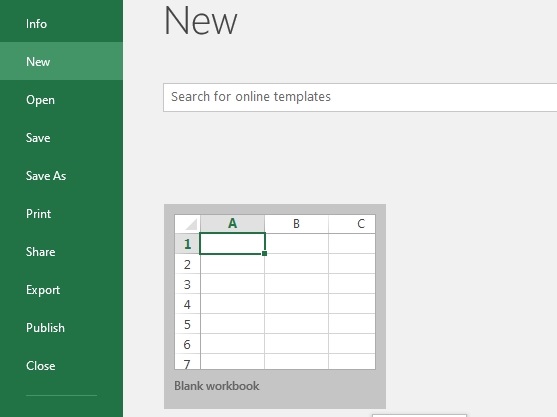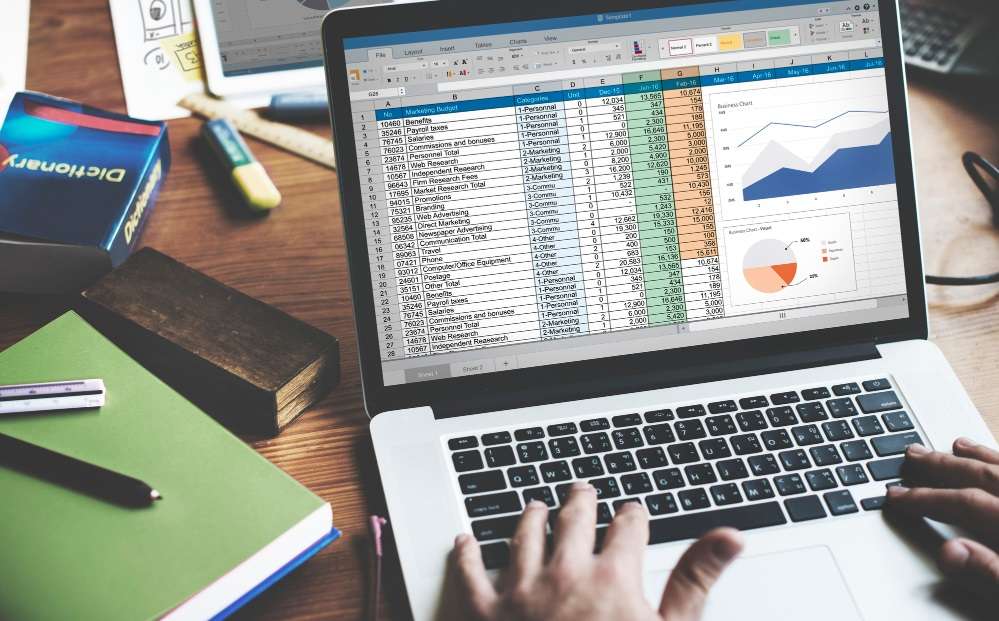
An Explanation Of Excel Spreadsheets And Its Functions
In this guide, we will explore the explanation of Excel spreadsheets and learn how to create, manage, and utilize them precisely. Whether you are a beginner or an experienced user, this article will provide you with valuable insights to enhance your Excel skills.
The definition of Excel spreadsheets lies in their ability to organize, analyze, and manipulate data efficiently, making them a powerful tool for data management and numerical computations.

Explanation of Excel spreadsheets
Before diving into the nitty-gritty of creating an Excel spreadsheet, it is essential to understand what Excel is and how it functions.
Microsoft Excel is a robust spreadsheet software that is widely used for data analysis, calculations, and creating visual representations of data. It provides a grid of cells that are organized in rows and columns, allowing users to efficiently enter and manipulate data.

Setting Up Excel and Creating a New Spreadsheet
To create an Excel spreadsheet, you need to have Microsoft Excel installed on your computer. If you don’t have it yet, you can purchase and download it from Microsoft’s official website. Once installed, you can open Excel and start a new spreadsheet by following these simple steps.
- Launch Microsoft Excel from the start menu or desktop shortcut.
- Click on “File” in the top-left corner and select “New” to create a new spreadsheet.
- Choose a template or start with a blank workbook.
- Save your new spreadsheet by selecting “File” and then “Save As.”
Entering Data into Excel
After setting up your new spreadsheet, it’s time to start entering data. Excel allows you to input text, numbers, dates, and more into the cells. Follow these steps to enter data accurately.
- Select the cell where you want to enter data.
- Type the information into the cell and press “Enter” to move to the next cell.

Formatting and Styling Excel Spreadsheets
Excel provides various formatting options to make your spreadsheet visually appealing and easy to read. You can format cells, apply borders, add colors, and more. Here’s how to format and style your Excel spreadsheets.
- Select the cells or range you want to format.
- Right-click and choose “Format Cells” to access formatting options.
- Experiment with font styles, cell colors, and borders to suit your needs.
Working with Formulas and Functions
Formulas and functions are the backbone of Excel, enabling you to perform complex calculations and analyze data efficiently. To use formulas and functions:
- Start with an equal sign (=) followed by the formula or function name.
- Enter the cell references or values required for the calculation.
- Press “Enter” to see the result.
Sorting and Filtering Data
Excel allows you to sort and filter data to organize information better. To sort and filter data in Excel:
- Select the range of cells you want to sort.
- Click on “Sort” in the “Data” tab and choose sorting options.
- To filter data, click on “Filter” in the “Data” tab and select the filtering criteria.

Creating Charts and Graphs
Charts and graphs provide visual representations of your data, making it easier to analyze trends and patterns. To create charts and graphs in Excel:
- Select the data you want to visualize.
- Click on “Insert” in the top menu and choose the chart type you prefer.
- Customize the chart elements as needed.
Using Excel Templates
Excel offers a range of pre-designed templates that can save you time and effort. To use Excel templates:
- Click on “File” and select “New.”
- Choose from the available templates or search for specific ones.
- Customize the template with your data.
Collaborating on Excel Spreadsheets
Excel allows multiple users to collaborate on the same spreadsheet simultaneously. To collaborate on Excel:
- Save your spreadsheet to OneDrive or a shared network location.
- Click on “Share” and invite collaborators via email.
- Track changes and resolve conflicts using the “Track Changes” feature.
Excel Spreadsheet Tips and Tricks
The Excel functions most commonly used empower users to efficiently manipulate and analyze data, making spreadsheet tasks seamless and effective. It has numerous tips and tricks that can boost your productivity and efficiency. Here are some handy tips:
- Use keyboard shortcuts to perform tasks quickly.
- Utilize conditional formatting to highlight important data.
- Freeze panes to keep headers visible when scrolling.
Troubleshooting Common Issues in Excel
Excel users may encounter common issues while working on spreadsheets. Here are some troubleshooting tips:
- Check for formula errors and correct them.
- Ensure compatibility with different Excel versions.
- Repair corrupt Excel files using the “Open and Repair” feature.
Excel Keyboard Shortcuts | Explanation of Excel spreadsheets
Keyboard shortcuts are time-saving tools that can significantly enhance your Excel experience. Here are some useful keyboard shortcuts to learn Excel spreadsheet functions properly:
- Ctrl + C: Copy selected cells.
- Ctrl + V: Paste copied cells.
- Ctrl + Z: Undo the last action.
Advanced Excel Techniques | Explanation of Excel spreadsheets
For advanced users, Excel offers a wide range of powerful features. Here are some advanced techniques about explanation of Excel spreadsheets:
PivotTables: Analyze and summarize data.
VLOOKUP: Find data in large datasets.
Macros: Automate repetitive tasks.

Excel Macros and Automation
Macros allow you to automate repetitive tasks in Excel. To create and run macros:
- Enable the “Developer” tab in Excel settings.
- Record your macro using the “Record Macro” option.
- Run the macro whenever needed.
Excel Data Analysis Tools
An explanation of Excel spreadsheets is crucial for mastering data organization and analysis in various professional and personal contexts.
Excel provides various data analysis tools to make sense of complex datasets. Here are some essential data analysis tools:
Goal Seek: Find the input needed to achieve a specific goal.
Data Tables: Perform multiple what-if analyses.
Solver: Optimize values to reach a target.
Excel on Mobile Devices
You can access and edit Excel spreadsheets on your mobile devices. To use Excel on mobile:
- Install the Microsoft Excel app on your device.
- Sign in with your Microsoft account to sync your spreadsheets.
Excel Security and Protection
You need to know the explanation of Excel spreadsheets very clearly to keep your Excel data secure, and implement security measures:
- Use strong passwords for your spreadsheets.
- Restrict access to sensitive data with permissions.
- Encrypt important Excel files for added protection.
Excel Integration with Other Applications
An in-depth explanation of Excel spreadsheets reveals their versatile functionality and pivotal role in data organization, analysis, and presentation. Excel can seamlessly integrate with other applications to enhance functionality. Here are some integration options:
- Link Excel data with Word documents or PowerPoint presentations.
- Import data from external sources like databases and websites.
Excel vs. Other Spreadsheet Software
Compare Excel with other spreadsheet software to understand its unique features and advantages.
Excel vs. Google Sheets: Collaboration and cloud capabilities.
Excel vs. OpenOffice Calc: Functionality and customization.

FAQs: Explanation of Excel spreadsheets
Can I use Excel on Mac computers?
Yes, Microsoft Excel is available for Mac OS, allowing Mac users to access all Excel features.
How can I recover unsaved Excel files?
Excel has an autosave feature that can help you recover unsaved files in case of unexpected closure.
Can I use Excel offline?
Yes, you can work on Excel offline, but certain features like online collaboration will be unavailable.
Can I protect specific cells in Excel?
Yes, you can lock specific cells to prevent accidental changes.
How can I create drop-down lists in Excel?
You can create drop-down lists using data validation in Excel.
Is Excel suitable for complex data analysis?
Yes, Excel offers various data analysis tools like PivotTables and Power Query for complex analysis.
Can I import data from CSV files to Excel?
Yes, you can easily import data from CSV files into Excel.
Can I create custom functions in Excel?
Yes, you can create custom functions using Visual Basic for Applications (VBA).
Is there a way to print specific areas of an Excel spreadsheet?
Yes, you can set the print area to print only specific ranges of cells.
Can Excel be used for financial calculation?
Yes, Excel is widely used for various financial calculations, such as loan amortization and investment analysis.
Conclusion: Explanation of Excel spreadsheets
In conclusion, conquering Excel spreadsheets is a valuable skill that can significantly enhance your productivity and data management capabilities. With the knowledge gained from this guide, you can create, format, analyze, and visualize data in Excel like a professional.
Remember, practice is key to becoming an expert in Excel. So, start experimenting with different characteristics and functions, and you’ll soon become an Excel expert.
Thank you for reading! If you have any questions or need further assistance, feel free to reach out.
- Categories: How To
Share This Post
Subscribe To Our Newsletter
Get More Update and Stay Connected with Us




